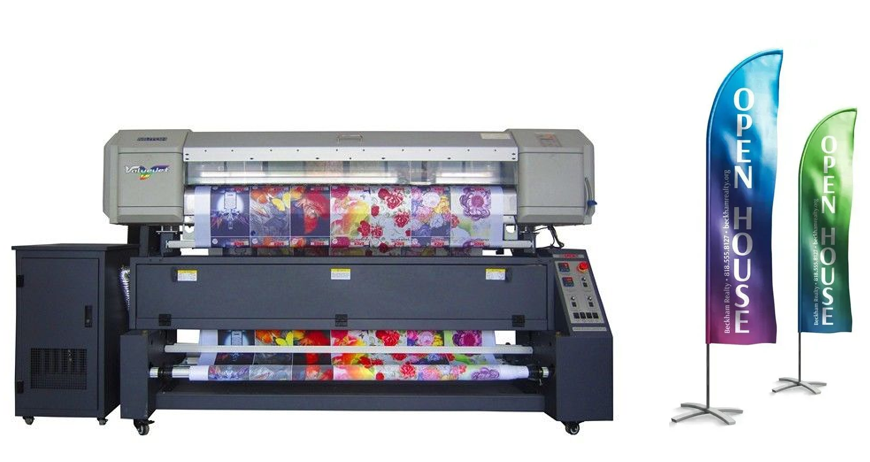In today’s eco-conscious world, businesses are increasingly looking for sustainable solutions—especially in advertising. One such innovation is sublimation printing on fabric, a process that not only delivers high quality visuals but also minimizes environmental impact. From flag fabric to sublimation banners, this method is revolutionizing how brands approach display advertising.
At its core, dye sublimation is a heat transfer printing method where sublimation inks are transformed directly from solid to gas without passing through a liquid state. This vapor embeds into the surface of the fabric, becoming part of the material rather than sitting on top of it. The result? Long-lasting, vibrant prints with no cracking or fading.
This process primarily requires sublimation printers, heat transfer presses, and appropriate printing fabrics—most commonly 100% polyester or polyester blends. These materials are crucial because only certain types of fabric can properly absorb the gas dye.

When compared to traditional printing methods, sublimation is significantly more sustainable. Here’s why:
Unlike screen or pigment printing, sublimation printing doesn't require water for dye mixing or fabric washing. This drastically reduces water consumption and wastewater pollution.
Traditional methods often involve solvents and fixatives. The sublimation process uses non-toxic sublimation inks, eliminating harmful chemical discharge and ensuring safer working environments.
Because the dyes become part of the sublimation fabric, there’s no ink buildup or peeling over time, reducing the need for reprinting. Additionally, sublimation fabric rolls can be printed on-demand, minimizing leftover stock and excess material waste.
With exceptional print quality and UV resistance, sublimation-printed banners and flag fabrics last much longer than their traditionally printed counterparts. This durability means fewer replacements, keeping waste out of landfills.
Sublimation only works effectively on polyester-based fabrics. Fortunately, 100% polyester and polyester blends are highly recyclable and increasingly being made from recycled plastic bottles, enhancing the circularity of the material.
By using printing fabrics like sublimation fabric rolls, brands can support sustainable production chains while still achieving vivid and high quality advertising displays.
From eco-friendly production to superior print quality, sublimation printing on fabric is a smart, sustainable choice for modern display advertising. Whether you're printing a vibrant flag fabric, an attention-grabbing sublimation banner, or large-scale exhibition graphics, this method delivers impressive results with a smaller environmental footprint.
As more companies embrace green practices, switching to sublimation printing isn't just a trend—it's a commitment to the planet.